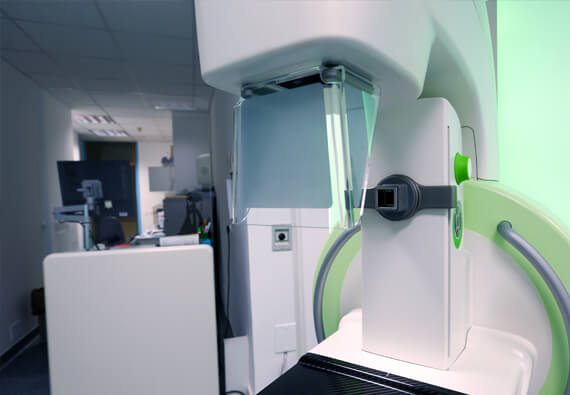
3D Mammography Allows for More Accurate Screening
In many aspects of life, more is better, and the same holds true for mammograms and breast cancer screening – more information is better for detection. Thankfully, breast tomosynthesis, or 3D mammography, is just that.
Mammograms remain the best tool doctors have for screening for breast cancer. However, if you or one of your friends or family members are one of the 10% of women who are called back from a screening mammogram, you know that even mammograms have limitations. That is because the current, conventional digital mammography produces images in two dimensions, but the breast is a three dimensional structure. This can lead to overlapping tissue, especially in women with dense breast tissue, often yielding those bright “white spots” in the breast that can mimic the appearance of a breast cancer. While these overlapping areas are often easily cleared with additional imaging and testing, these “false positive” callbacks cause a great deal of anxiety for women.
This is why physicians are turning to breast tomosynthesis, also known as 3D mammography. This breakthrough in mammography utilizes advanced imaging technology to produce a 3D image of the breast. Instead of the two pictures taken of each breast with 2D mammography, a sequence of X-rays is taken at different angles of each breast. This provides a clearer, more accurate view of the breast, eliminating the confusion of overlapping tissue. Think of it as peeling layers one at a time. For example, if you were looking at a book without opening it, the book’s cover would obstruct your view of the words. With tomosynthesis, the book can be read one page at a time. A study in the Journal of the American Medical Association showed that with this improved view, there was a 15% decrease in the number of women called back from screening exams. That means less anxiety and stress each year for a large number of women, as well as fewer unnecessary tests and biopsies for those areas which cannot be cleared by standard mammograms and ultrasound.
What’s more, a study in the American Journal of Radiology showed that the test has improved detection of breast cancer, up to 44%, especially with the more aggressive and potentially fatal invasive cancers. It also has a greater likelihood of demonstrating multiple breast cancers, which can occur in up to 15% of breast cancer patients. This can help doctors tailor the specific therapy and plan for women with newly diagnosed breast cancer.
While increased radiation is a consideration for breast tomosynthesis, this might be offset by the decreased additional imaging needed for those false positive callbacks. Additionally, even if a woman needs additional testing from her screening mammogram, the 3D mammography often gives greater detailed information that will allow many women to proceed directly to ultrasound and be spared additional X-rays for diagnosis.
3D mammography is likely to be most useful for those women with dense breast tissue, or a greater amount of glandular tissue in their breasts than fat, as these are the tissue patterns that most often cause overlapping tissue and false positive callbacks. Discuss with your doctor what kind of tissue density you have and whether breast tomosynthesis would be a good option for you.
— Anjali Malik, MD, Fellowship Trained Breast Imager, Eastern Radiologists